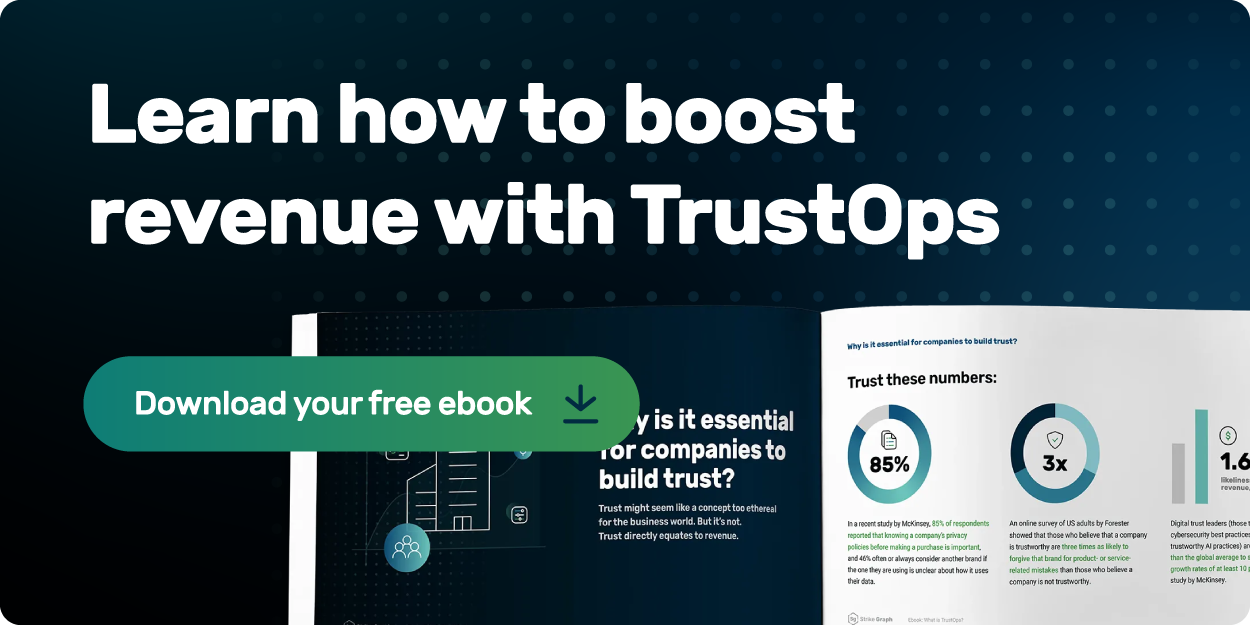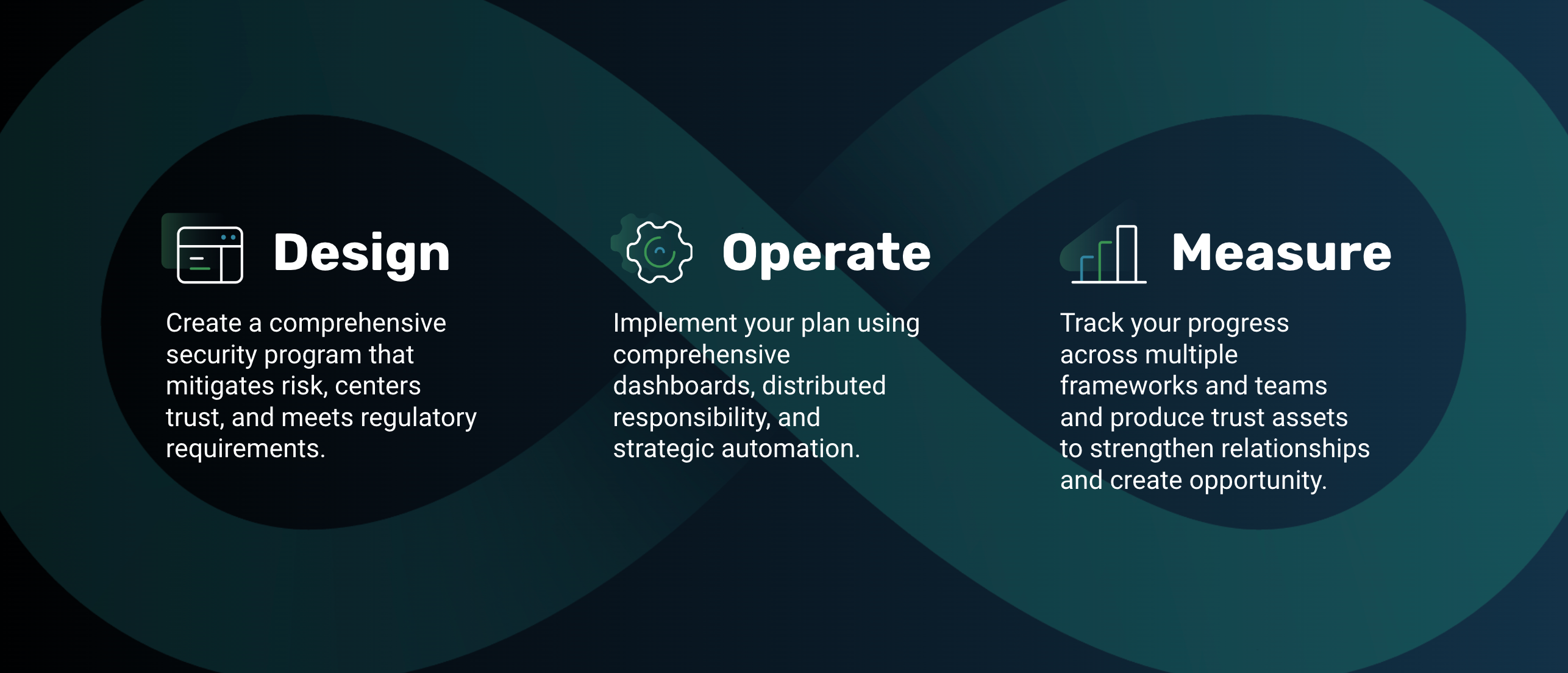This is the second post in a three-part blog series about how to create your TrustOps or security program using three interlocking phases: design, operate, and measure. If you missed the first installment, not to worry there’s a quick recap below.
Why are we doing this series? Because we see an awful lot of companies approaching security the way they think it should be done. But what we — and other security industry leaders — are finding is that these traditional methods just aren’t working in today’s business environment. What’s really needed now is a holistic, tech-enabled take on building and running your security program.
The first blog in our series dealt with design. We touched on how common it is for companies to hire a consultant or opt for a certification-in-a-box when they finally decide they have to do something about security. There are significant problems with both of these approaches. (We outline those more in-depth in the blog.) Proactively designing a security — or better yet TrustOps — program that builds trust is more efficient and more effective.
In this blog, we’ll dig into the operation phase, and then in the third installment we’ll get into measurement. Let’s get to it!
The traditional approach to operating a security program
In the more traditional approach to operating a security program, a CTO or founder usually cajoles the rest of the team — who often don’t have the expertise to help much — into meeting any necessary security requirements. Then, once a company grows to the point that they can hire a full-time IT security coordinator, that person is tasked with cleaning up the disorganized implementation they’ve inherited.
What makes matters worse is that most compliance tools offered in today’s marketplace aren’t built to adapt to a customer’s existing systems, but rather require the customer to adapt to their compliance solution. This can not only mean a fundamental incompatibility with legacy systems, but also a lack of integration flexibility, data silos, high implementation and customization costs, and a steeper training and learning curve for team members.

And, many of these solutions don’t offer dashboard tools to their customers, meaning company leaders can’t keep an eye on the health and effectiveness of their compliance or security programs outside of specific DevOps tools.
Worse yet, when a company focuses solely on one certification it stymies growth down the road. Once compliance is reached, it’s often difficult to maintain it moving forward, stay on top of changing regulations, ensure updated requirements are met, and build toward other security frameworks in the future.
The best way to operate your security program
Given all the issues with the traditional approach to security program operation, what are businesses to do? This is where a holistic, tech-enabled approach can help.
When you choose your compliance software, make sure you’re getting a platform that has the tools both to get you to your first certification and then to support the continuation and growth of your security program into the future.
The right software will allow you to
- Distribute security tasks across the entire team
- Collaborate company wide
- Make strategic decisions based on data
- Stay within your existing systems instead adopting new external ones
- Monitor global and granular progress across your security program
- Minimize resource use with smart automation
Strike Graph can take your security program operation to the next level
Strike Graph’s all-in-one compliance and certification platform gives you exactly those capabilities. Our teams feature allows intra- and cross-team collaboration while maintaining appropriate access. And, for larger companies, it lets security operators work across multiple organizations.
Our dashboard gives the security and business leaders at your company the data they need to ensure they’re building trust both within the company and with current and future partners and clients. And, our trust asset library puts all our security reports and certifications at your fingertips when you need them to close a deal.
Finally, our platform adapts to your unique security needs now and as you grow with in-platform certification, smart automations, pen testing, multi-framework flexibility, and more. Whatever your security needs are in the future, you’ll be poised to meet them quickly and painlessly.
Want to read more? Click through to the final article in this series.
.jpg?width=1448&height=726&name=Screen%20Shot%202023-02-09%20at%202.57.5-min%20(1).jpg)









